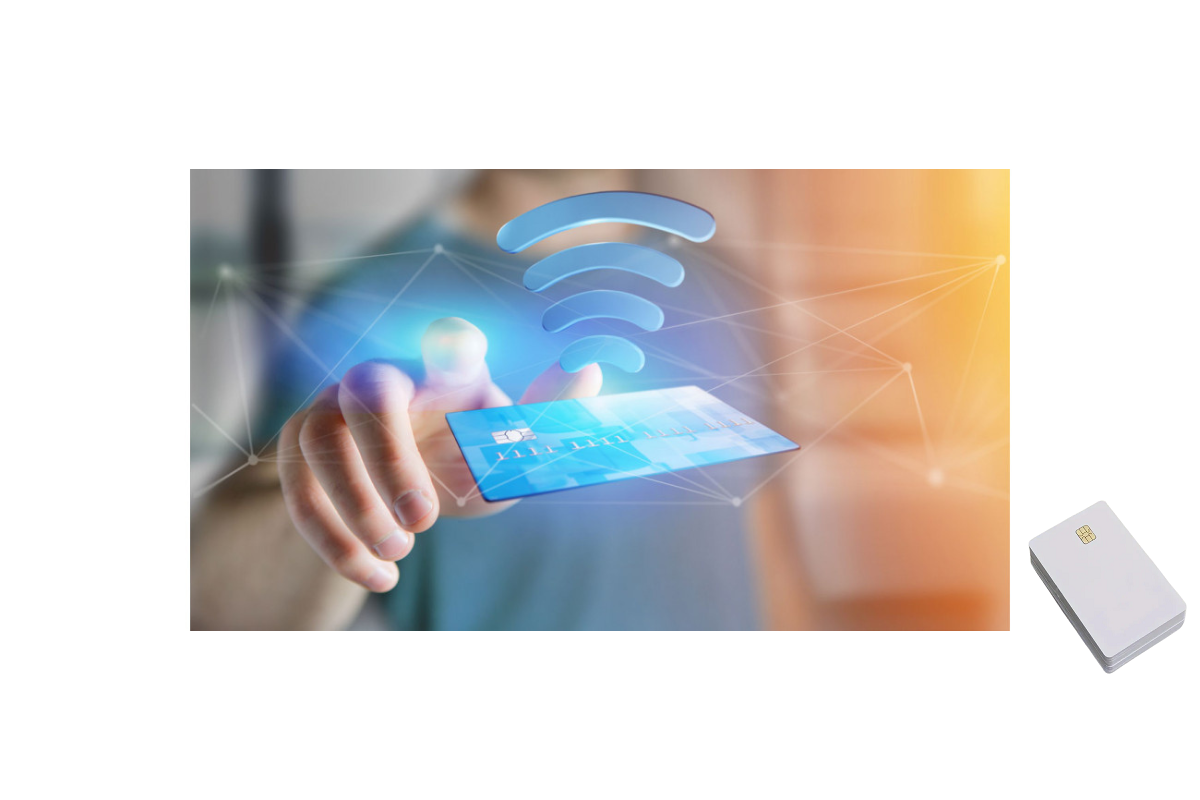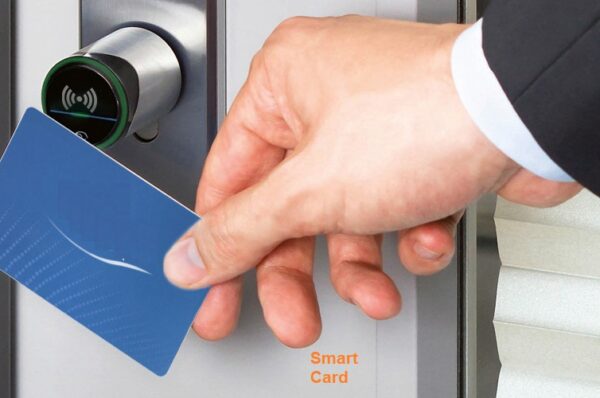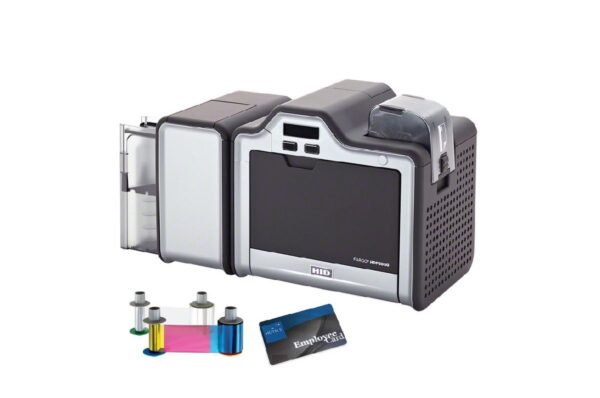There are two types of smart cards:
-
Contact Smart Cards:
- These cards feature a prominent gold-plated contact area on their surface.
- In order to establish communication with a reader, the smart card must be physically inserted into the card reader, allowing the contacts on the card to connect with those of the reader.
- Consider the earlier EMV (chip and pin) credit and debit cards prior to the widespread adoption of contactless technology. The card is inserted into the terminal to allow the chip to be read.
Advantages:
- Enhanced security resulting from the necessity of a physical connection
- Large data storage capacity in some types.
Disadvantages:
- It can be slower and less convenient than contactless
- Prone to deterioration on the contact plate.
Common Applications:
- Secure access control for sensitive areas
- Some older banking cards, and potentially national ID cards in certain systems.
Contactless Smart Cards:
-
- These cards interact with a reader through Radio Frequency Identification (RFID) or Near-Field Communication (NFC) technology.
- These devices are equipped with an integrated antenna that enables data exchange with a reader when positioned within a close range of a few centimeters.
- MIFARE cards (Classic, Ultralight, DESFire) are prominent examples of contactless smart cards.
- Advantages: Fast and convenient to use (just tap or wave), more durable as there’s no physical contact, suitable for high-throughput applications.
Dual-Interface Smart Cards:
-
- These cards offer the advantages of both technologies by integrating a contact chip and a contactless antenna into one card.
- They can be used with both contact and contactless readers, offering maximum flexibility and convenience as the infrastructure for both types of readers evolves.
- Many newer banking cards are dual-interface, allowing you to either insert the chip or tap to pay.
Memory Cards:
-
- These cards primarily function as data storage devices.
- They have memory circuits to store information but lack a microprocessor for processing complex operations.
- Think of them like a portable data storage unit with some security features.
- Common Applications: Loyalty cards, pre-paid phone cards, some basic access control cards.
Hybrid Smart Cards:
-
- These cards contain multiple chips, often a combination of a memory chip and a microprocessor chip, to serve different, independent applications.
- Unlike dual-interface cards where a single chip supports both contact and contactless communication, hybrid cards have separate chips for different purposes.
- Common Applications: An employee ID card with one chip for building access and another for secure network login.
- What is a 4 digit smart card PIN?



